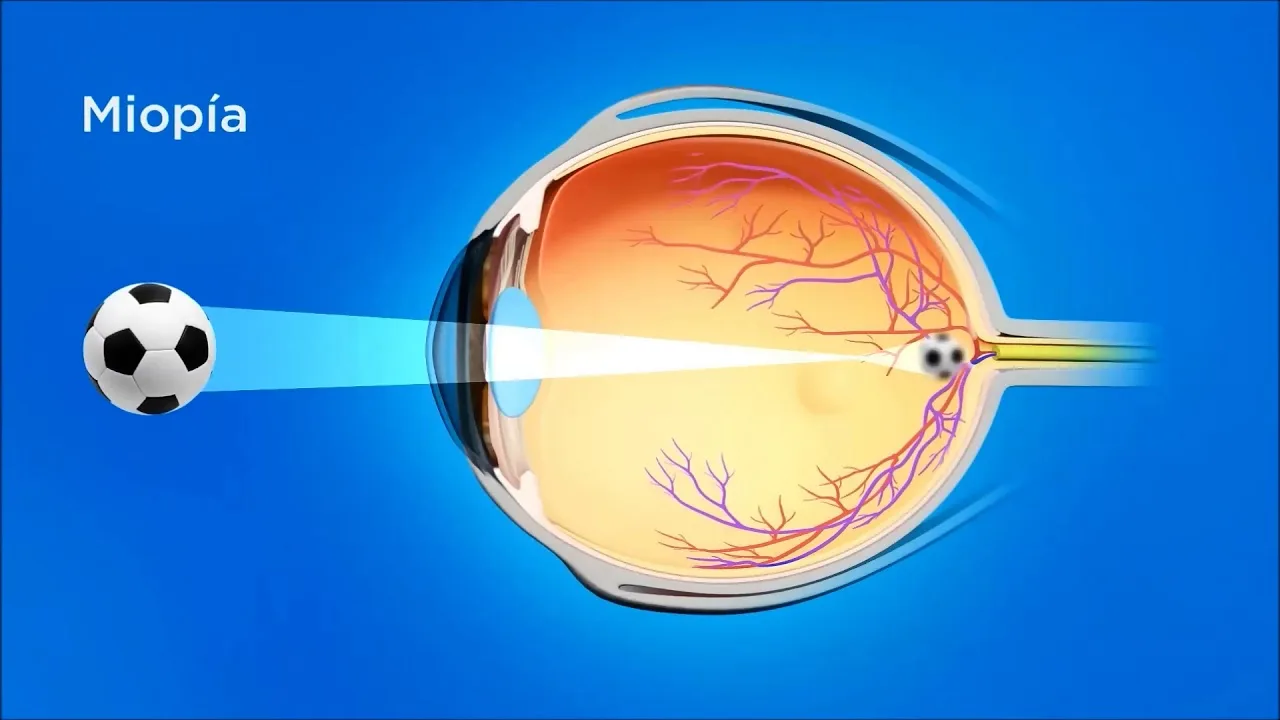Myopia, commonly called nearsightedness or shortsightedness, is a vision condition where distant objects appear blurry, while close objects are seen clearly. It’s a prevalent eye problem affecting millions in India, especially young adults and children. If you’re struggling to see the blackboard in class, recognise faces from afar, or decipher road signs while driving, myopia could be the culprit. Don’t worry, though! Myopia is a treatable condition with various corrective options available. This article dives deep into myopia, explaining its causes, symptoms, diagnosis, and effective treatments.
What Causes Myopia?
Imperfect Eye Shape
The eyeball, in a perfect world, should be shaped like a sphere. In myopia, the eyeball elongates slightly, causing light rays to focus in front of the retina instead of directly on it. This distorted focus leads to blurry distant vision.
Heredity
Myopia often runs in families. If you have a parent or sibling with nearsightedness, you’re more likely to develop it too.
Environmental Factors
Spending excessive time glued to screens – TVs, computers, smartphones – and insufficient outdoor activity are believed to contribute to myopia development, particularly in children.
Symptoms of Myopia
- Blurred vision for distant objects
- Squinting to see clearly
- Headaches caused by eye strain
- Difficulty seeing at night
- Needing to hold reading material close to your face
Do I Have Myopia?
If you experience any of the symptoms mentioned above, schedule an eye test with a qualified ophthalmologist. A comprehensive eye exam typically involves:
- Visual Acuity Test: This familiar eye chart test measures your ability to see objects at various distances.
- Retinoscopy: This painless procedure uses a light instrument to assess how light reflects off your retina, helping determine your refractive error (including myopia).
- Slit-Lamp Examination: The doctor uses a high-powered light to examine your eye’s internal structures for any abnormalities.
Myopia Treatment Options
Thankfully, myopia is easily correctable with various methods:
- Eyeglasses: Spectacles with corrective lenses are the most common and affordable solution. These lenses bend light rays to focus them accurately on your retina, restoring clear vision.
- Contact Lenses: These comfortable lenses rest directly on your cornea, the eye’s outer surface. They provide a wider field of view than glasses and are suitable for active individuals.
- Orthokeratology (Ortho-K): These rigid gas-permeable contact lenses are worn overnight to gently reshape your cornea temporarily. You can see clearly throughout the day without corrective lenses during waking hours.
- LASIK Surgery: LASIK (laser-assisted in situ keratomileusis) is a refractive surgery that uses a laser to reshape your cornea, permanently correcting your myopia. It’s a popular option for those who prefer a glasses- and contact-free lifestyle.
Choosing the Right Treatment
The best treatment for myopia depends on several factors, including your age, lifestyle, severity of nearsightedness, and personal preference. Discuss these options with your ophthalmologist to determine the most suitable solution for you.
Living with Myopia
Myopia doesn’t have to limit your life. With proper eye care and the right corrective method, you can enjoy clear vision and an active lifestyle. Here are some tips for managing myopia:
- Regular Eye Exams: Schedule regular eye checkups with your ophthalmologist to monitor your vision and eye health.
- Maintain Good Posture: Avoid slouching while reading or using electronic devices. Proper posture reduces eye strain.
- Take Breaks from Screens: Give your eyes a break every 20 minutes by looking away from screens and focusing on distant objects for 20 seconds (20-20-20 rule).
- Eat a Balanced Diet: A diet rich in fruits, vegetables, and omega-3 fatty acids can promote overall eye health.
- Protect Your Eyes from UV Rays: Wear sunglasses that block UVA and UVB rays to shield your eyes from sun damage.
By understanding myopia, its causes, and treatment options, you can take control of your vision health and ensure you see the world clearly. Remember, early detection and proper management are key to enjoying optimal vision throughout your life.



